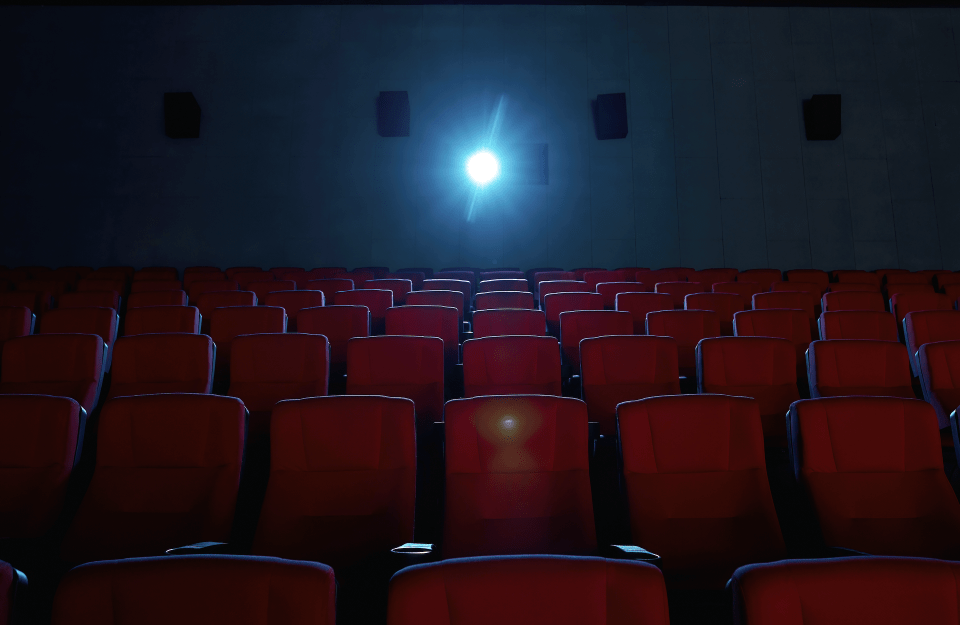New Study Finds That Violent Language in Films Has Increased Since the 1970s
A new study by Computational Social Science Lab postdoctoral researcher Amir Tohidi and colleagues finds that speech about committing murder in movies is increasing over time, even in non-crime movies.

A new study from the Computational Social Science Lab at the Annenberg School for Communication, the School of Engineering and Applied Science, and the Wharton School at the University of Pennsylvania, published in JAMA Pediatrics, has analyzed a massive number of English-language films to examine if the portrayal of violence in movies has changed over time. The study analyzed dialogue from over 166,000 films over the last five decades and found that violent language has increased in movies over time. While other studies have shown increases in film violence, the value of this analysis is its huge dataset.
To better understand the prevalence of violence in film, both in crime films and in other genres, researchers, including Amir Tohidi, a postdoctoral researcher at the Computational Social Science Lab, Babak Fotouhi of the University of Maryland, Rouzbeh Touserkani of the Institute for Research in Fundamental Sciences, and Brad J. Bushman of The Ohio State University, analyzed the dialogue of films released between 1970 to 2020, extracting dialogue referring to violent actions committed by characters.

“We focused exclusively on murderous verbs in our analysis and avoided discussions about what constitutes violence and what does not,” Tohidi notes. “Including less extreme forms of violence would result in a higher overall count of violence.”
The relationship between media and culture is bidirectional, making it important yet challenging to disentangle and analyze their effects. On one hand, movies can shape cultural tastes, beliefs, attitudes, and behaviors. On the other hand, movies often reflect societal realities, including the prevalence of violence.
To better understand this bidirectional dynamic, a crucial question arises: How does the portrayal of violence in media change over time?
The study, which sought to answer exactly this, took place from September 2022 to September 2024. During this time, researchers used movie dialogue from a total of 166,534 films, extracting murderous words, including kill and murder.
The study considered only murderous verbs used in active construction (such as “She killed X.”). They didn’t count passive constructions (“He was killed by X.”) or negations (“She didn’t kill X.”) or questions (“Did she murder X?”), or other forms of violence such as shooting or stabbing.
“We designed this to be a conservative estimate,” Fotouhi says. “It is likely there was more violence in the movies than what we calculated in terms of the dialogue.”
They then used natural language processing techniques to match the murderous dialogue to the characters; the analysis revealed that 6.97% of these films contained violent language, showing that dialogue involving characters murdering others is increasing over time — not just limited to the crime genre but across all film categories.
Violence is often incorporated into films by producers as it appeals to younger audiences and boots profits. The effect of films on culture is challenging and controversial so further studies on the impact of film dialogue on society and individual behavior would provide insights into addressing harm reduction in media production and consumption.
“The movie industry is a competitive market, with studios competing for audience attention by using elements that most effectively hook audiences — with violence consistently being the most exploited,” adds Tohidi.
The authors conclude by calling for further studies that would provide insights into the bidirectional effects of films on culture and address harm reduction in media production and consumption.
"Trends of Violence in Movies During the Past Half Century" was authored by Babak Fotouhi, Amir Tohidi, Rouzbeh Touserkani, and Brad J. Bushman and published in JAMA Pediatrics.
The Computational Social Science Lab is part of the School of Engineering and Applied Science, Annenberg School for Communication, and Wharton School of Business at the University of Pennsylvania.



